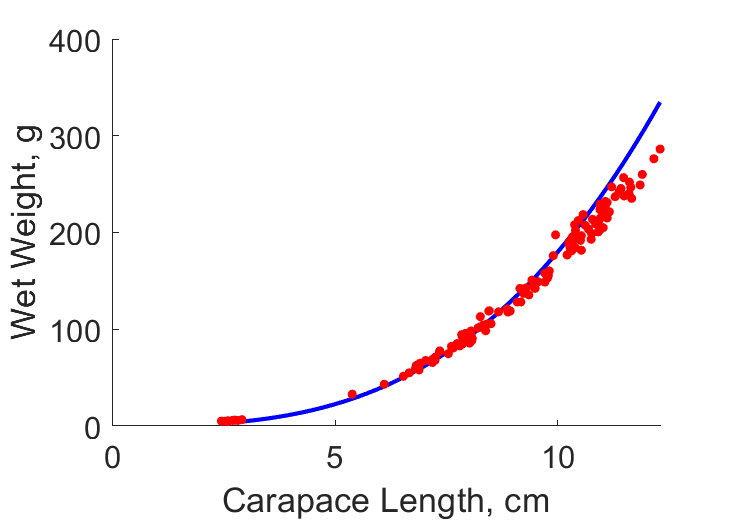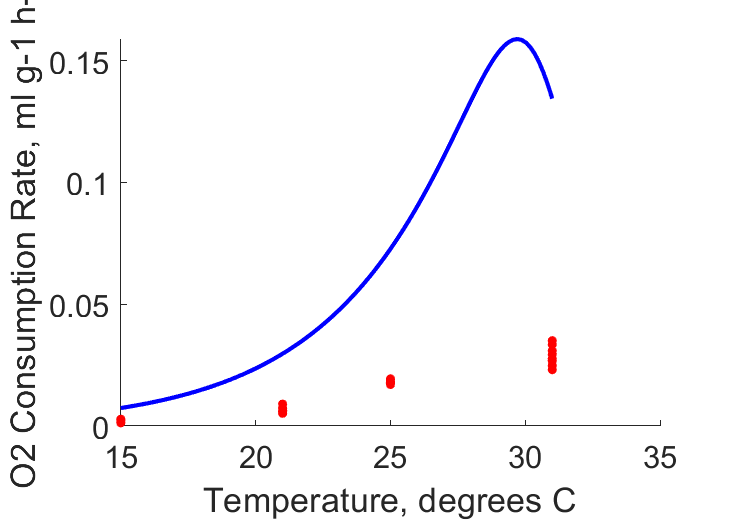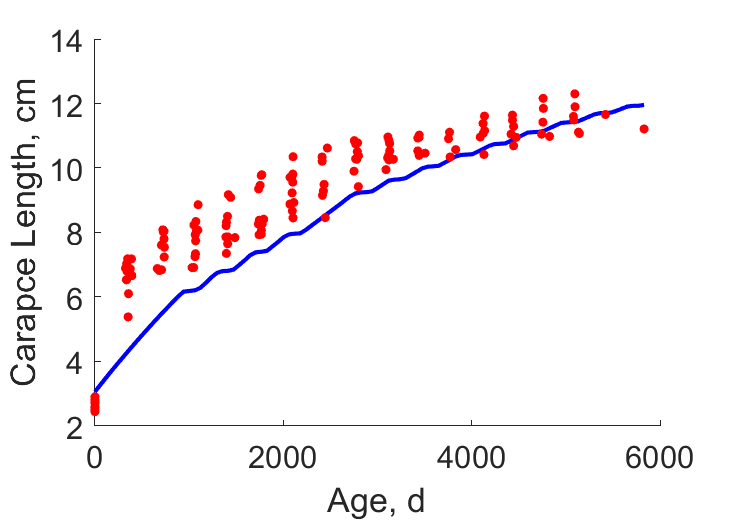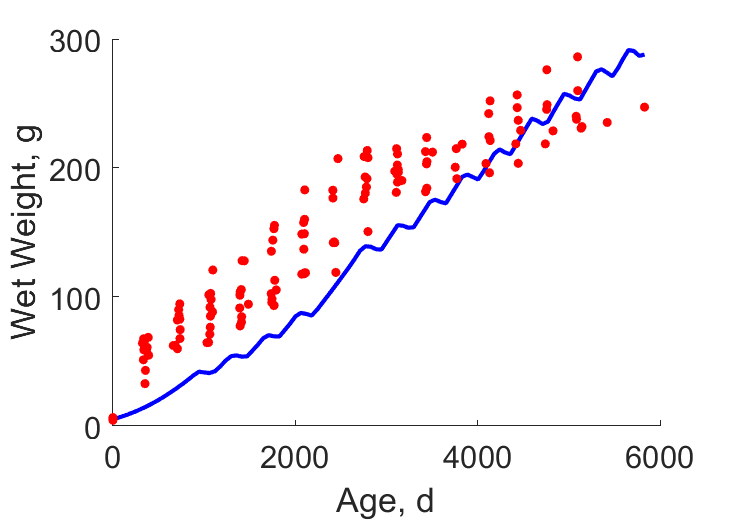Predictions & Data for this entry
| Model: std | climate: Csa | migrate: | phylum: |
| COMPLETE = 2.8 | ecozone: TA | food: biCi | class: |
| MRE = 0.318 | habitat: 0bTd, biFp | gender: Dg | order: |
| SMSE = 0.128 | embryo: Tt | reprod: O | family: |
Zero-variate data
| Data | Observed | Predicted | (RE) | Unit | Description | Reference |
|---|---|---|---|---|---|---|
| ab | 153 | 69.21 | (0.5477) | d | age at birth | Arna2018 |
| ap | 3767 | 4537 | (0.2044) | d | age at puberty | Arna2018 |
| am | 3.65e+04 | 3.191e+04 | (0.1259) | d | life span | Arna2018 |
| Lb | 2.6 | 3.004 | (0.1555) | cm | carapace length at birth | Arna2018 |
| Lp | 10.7 | 9.578 | (0.1049) | cm | carapace length at puberty | Arna2018 |
| Li | 13.1 | 17.81 | (0.3597) | cm | ultimate carapace length | Arna2018, BurbKuch2010 |
| Wwb | 5.2 | 5.258 | (0.01109) | g | wet weight at birth | Arna2018, BurbKuch2010 |
| Wwp | 236.5 | 170.3 | (0.2798) | g | wet weight at puberty | Arna2018 |
| Wwi | 417 | 1096 | (1.628) | g | ultimate wet weight | Arna2018 |
| Ri | 0.0137 | 0.009984 | (0.2712) | #/d | maximum reprod rate | Burb1981 |
Uni- and bivariate data
| Data | Figure | Independent variable | Dependent variable | (RE) | Reference |
|---|---|---|---|---|---|
| LW |  | Carapace Length | Wet Weight | (0.1468) | Arna2018 |
| TO |  | Temperature | O2 Consumption Rate | (106.5) | ArnaKuch2015 |
| tL |  | Age | Carapce Length | (0.1088) | Arna2018 |
| tW |  | Age | Wet Weight | (0.1964) | Arna2018 |
Pseudo-data at Tref = 20°C
| Data | Generalised animal | Pseudemydura umbrina | Unit | Description |
|---|---|---|---|---|
| v | 0.02 | 0.02579 | cm/d | energy conductance |
| p_M | 18 | 19.28 | J/d.cm^3 | vol-spec som maint |
| k_J | 0.002 | 0.001856 | 1/d | maturity maint rate coefficient |
| k | 0.3 | 0.7838 | - | maintenance ratio |
| kap | 0.8 | 0.6432 | - | allocation fraction to soma |
| kap_G | 0.8 | 0.7709 | - | growth efficiency |
| kap_R | 0.95 | 0.95 | - | reproduction efficiency |
Discussion
- Depressed state assumed ([p_M], v, k_J, reduced), during summer and embryo
- This is the "Typical p_M" model of P. umbrina as presented in ArnaMitc2018
- Predicted respiration data much higher than measured; weights set to zero
Facts
- All stages experience torpor, and torpor is implemented by letting f switch backwards and forwards from f_zoo to 0 (Ref: Arna2018)
- Torpor occurs approximately late-December until mid-May every year (zoo popn) (Ref: Arna2018)
- Mating occurs after torpor in the pond, approximately July-August (zoo popn) (Ref: Arna2018)
- Egg laying occurs before torpor, approximately November-December (Ref: Arna2018)
- Torpor seems required for reproduction (Ref: Kuch2017)
- Average mass loss over torpor period is 7.9%, no corresponding significant change to length (0.2mm; 2012-2013 data collected by S. Arnall) (Ref: Arna2018)
- Some individuals occasionally undergo a half-torpor season due to being used in the public exhibit pond (Ref: Arna2018)
- All coupling/mating, entry into torpor, and exit from torpor is artificially imposed by staff at Perth Zoo. Females may have been capable of becoming gravid ealier if given opportunity to mate prior. (Ref: Arna2018)
Bibliography